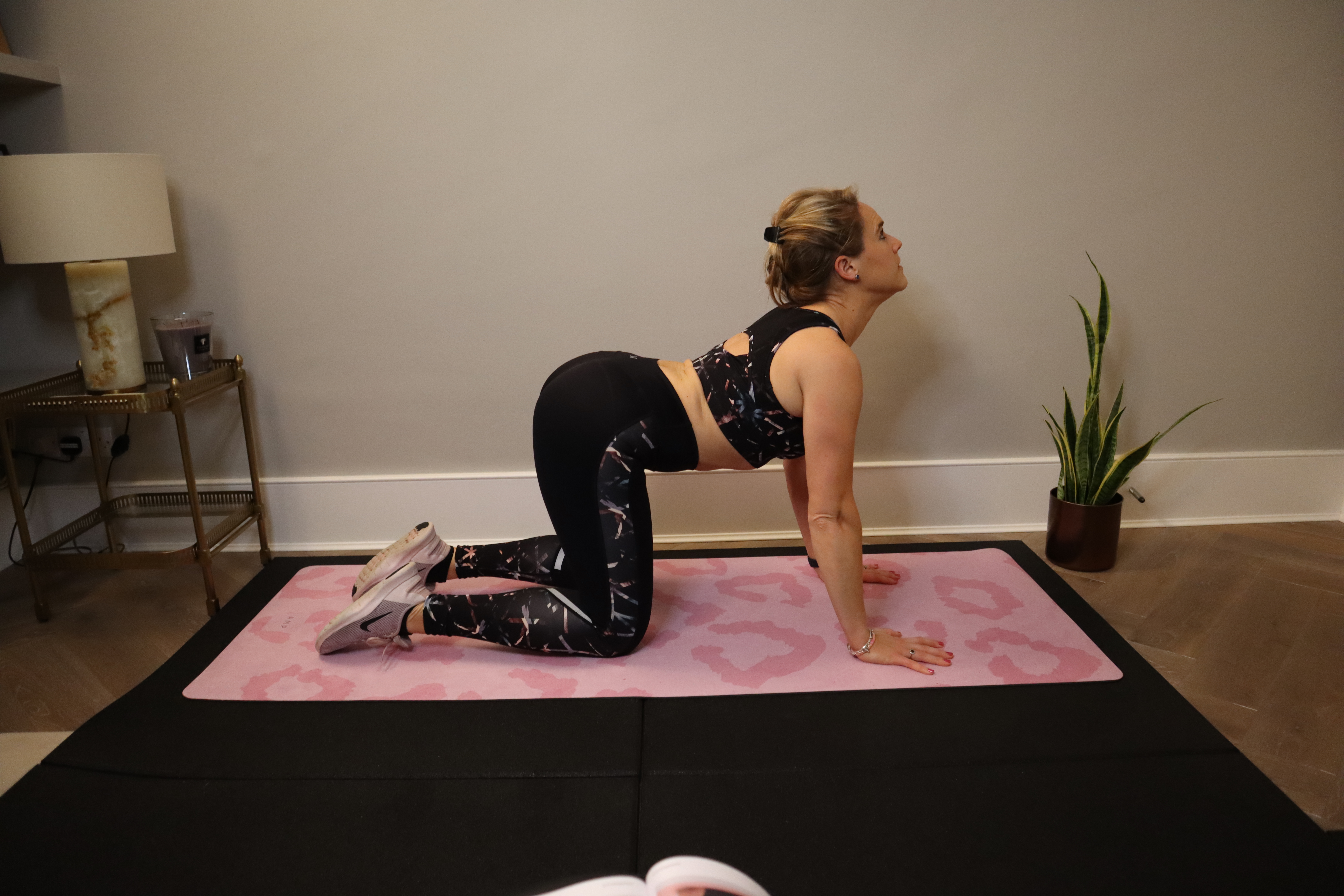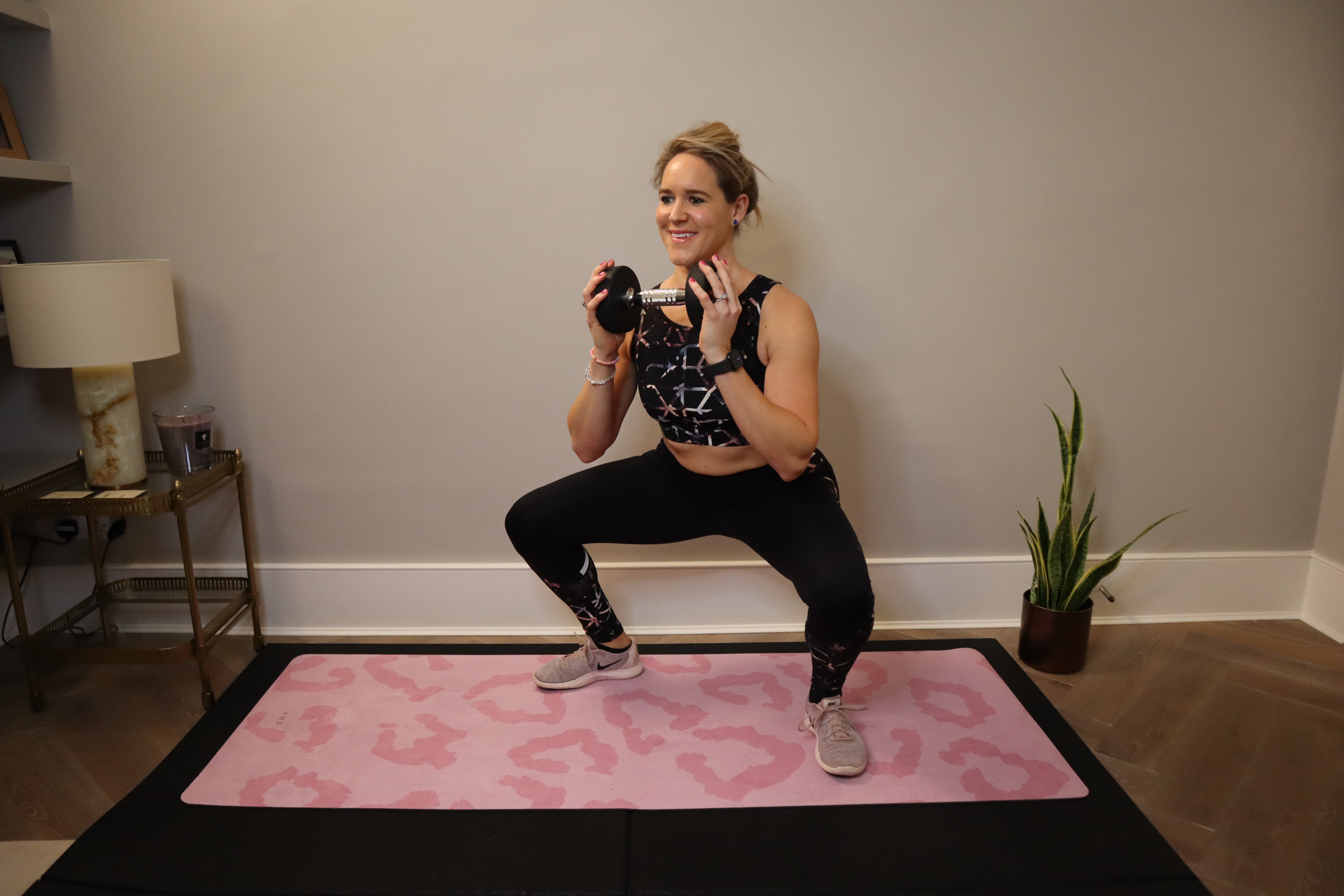Low on workout motivation? A trainer shares her top tips for getting started, and a five-move dumbbell workout to kick things off
Stop skipping workouts with this trainer’s accessible five-move session you can do from home


The hardest part of working out is often finding the motivation to start. Luckily, there are some tips and tricks you can use to stop skipping sessions.
"Schedule the workout so you have a dedicated time to get it done, then set up your workout space the night before," advises LDN Mum’s Fitness founder Sarah Campus.
"Once you’re there, put some music on to get in the mood. Reward yourself when you get it done—tell someone or give yourself a nourishing meal, for example—then schedule your next one to make it a habit."
Now you have your motivation tactics in place, you just need a workout to do, and Campus has you covered on that front too. Below, she’s programmed a five-move dumbbell session designed to strengthen your upper and lower body.

Sarah Campus is the founder of LDN MUM’S Fitness, a training service for mums and mums-to-be. She is also a level three personal trainer, gym instructor, and nutrition coach.
How to do Sarah Campus’ dumbbell workout
- Dumbbell squat: 40 secs x 3-4
- Push-up: 40 secs x 3-4
- Alternating dumbbell reverse lunge: 40 secs x 3-4
- Biceps curl: 40 secs x 3-4
- Plank: 40 secs x 3-4
Perform the exercises above as a circuit. For each move, work for 40 seconds, rest for 20 seconds, then start the next exercise.
Repeat this sequence for three total rounds, or four if you want an extra challenge.
Warm-up


Make sure you do a thorough warm-up before starting this workout. Campus recommends jogging on the spot and doing star jumps to raise your heart rate, then doing the world’s greatest stretch and cat-cow stretches (images above) to ready your muscles.
Start your week with achievable workout ideas, health tips and wellbeing advice in your inbox.
1. Dumbbell squat

Sets: 3-4 Work: 40 seconds Rest: 20 seconds
- Stand upright with your feet roughly hip-width apart and your toes pointed outwards slightly (this starting position will depend on the individual, so play around to find what works for you). Hold a dumbbell to your chest.
- Keeping your chest up, push your hips back then bend your knees as if you were sitting into a chair behind you.
- Lower your hips as far as you comfortably can while keeping your chest up, then drive through your feet to return to the starting position.
2. Push-up


Sets: 3-4 Work: 40 seconds Rest: 20 seconds
- Start in a high plank position with your weight spread between your hands and toes, your hands directly beneath your shoulders and your body forming a straight line from your head to your heels.
- Brace your core then, without flaring your elbows, lower your chest towards the floor.
- When it is a couple of centimeters from the ground, drive through your hands to return to the starting position. If this is too difficult, you can lower your knees to the ground throughout the movement or place your hands on a stable, elevated surface like a bench.
3. Alternating dumbbell reverse lunge

Sets: 3-4 Work: 40 seconds Rest: 20 seconds
- Stand upright and hold a dumbbell to your chest.
- Take a step backward with your right leg then, keeping your torso upright, lower your right knee towards the floor until both knees form rough right angles.
- Drive through your left foot to return to the starting position, then repeat on the other leg.
4. Biceps curl

Sets: 3-4 Work: 40 seconds Rest: 20 seconds
- Stand upright with your arms by your side, a dumbbell in each hand and your palms facing forward.
- Keeping your elbows still and tucked to your sides, curl both dumbbells as far toward your shoulders as you can.
- Slowly lower them back to the starting position.
5. Plank


Sets: 3-4 Work: 40 seconds Rest: 20 seconds
- Spread your weight between your forearms and your feet. Your elbows should be directly underneath your shoulders, your forearms should face forwards and your body should form a straight line from your head to your heels.
- Brace your core and hold this position. If this feels too difficult, you can drop your knees to the floor, but make sure you still keep your back flat and your core tight.
Post-workout
Campus suggests ending your session with some static stretches including child’s pose, upward-facing dog, downward-facing dog and a deep yoga squat.
Benefits of this workout
This workout will recruit and strengthen muscles in your chest, shoulders, arms, legs and core, all with just five exercises. The circuit format makes it a time-efficient option too—three rounds should take just 15 minutes.
And these aren’t the only benefits.
"This workout will boost your mood by releasing feel-good hormones called endorphins," says Campus. "It will also make you feel energized and improve your flexibility and balance, especially if performed consistently."
Need a new set of weights to support your new training regime? Have a look through our guide to the best adjustable dumbbells

Harry Bullmore is a Fitness Writer for Fit&Well and its sister site Coach, covering accessible home workouts, strength training session, and yoga routines. He joined the team from Hearst, where he reviewed products for Men's Health, Women's Health, and Runner's World. He is passionate about the physical and mental benefits of exercise, and splits his time between weightlifting, CrossFit, and gymnastics, which he does to build strength, boost his wellbeing, and have fun.
Harry is a NCTJ-qualified journalist, and has written for Vice, Learning Disability Today, and The Argus, where he was a crime, politics, and sports reporter for several UK regional and national newspapers.